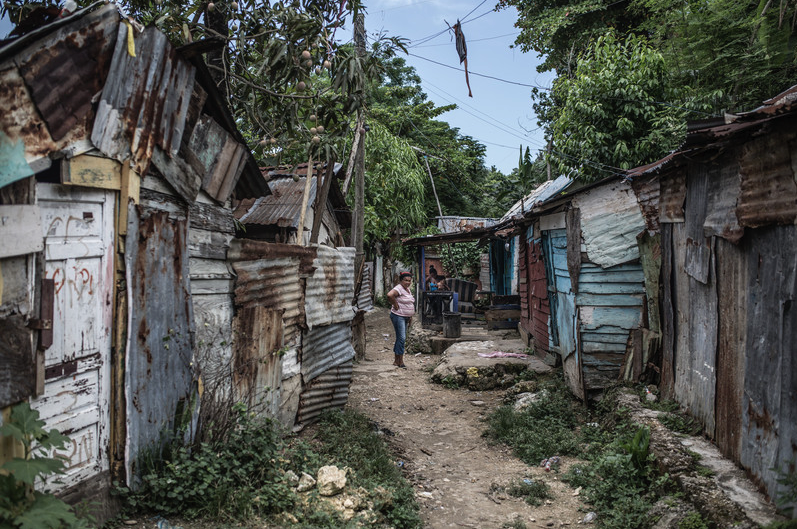Latin America faces numerous challenges to achieve inclusive, long-term development with political stability. These are institutional, political, social, cultural, and economic challenges. All are interrelated, but the cornerstone is the economy.
The current economic stagnation in the region since 2014, which institutions such as the International Monetary Fund (IMF) and the Economic Commission for Latin America and the Caribbean (ECLAC) have defined as the “second lost decade” (2014/2023), has become the turning point for a development model that has reached its ceiling after the end of the boom time (the Golden Decade, 2003-2013). Latin America has been living for ten years amid stagnation or weak economic expansion (2013, 2014, 2015, 2018, 2019, 2022 and 2023) and crisis (2016, 2017 and 2020) with the only exception of 2021, an atypical year due to the rebound effect after the pandemic recession of the previous year. Latin America needs to grow at around 5% to absorb social demands and achieve growth with development and thus avoid the trap of middle-income countries. And that goal is far off at present: the IMF estimates that the average regional Gross Domestic Product (GDP) for Latin America and the Caribbean will grow 2% this year, after 2.3% last year and 2.5% in 2025.
Colombian economist José Antonio Ocampo notes, “Average annual growth remained slightly below 0.9% during 2014-2023, worse than the 1.3% rate of the 1980s. However, GDP per capita is projected to be slightly higher in 2023 than in 2013, due to slower population growth. In contrast, it was not until 1994 that the region’s GDP per capita returned to its 1980 level. Latin America therefore has a serious growth problem.”
A new lost decade
This second lost decade has brought to light a set of structural problems that have been weighing down Latin American countries since 2013 and even earlier: a dysfunctional economic and political model that does not guarantee long-term economic growth, nor sustainable and inclusive development, nor has it been accompanied by an effective state and efficient public administrations when it comes to implementing public policies favorable to vulnerable sectors and capable of channeling the demands of the emerging middle classes.
Among the effects of this second lost decade is the increase in the malaise of societies, linked to this weak economic expansion and social deterioration. For instance, increased insecurity, poverty, inequality, and, above all, the vulnerability of the middle classes, which has given rise to a permanent punishment vote for the management of the ruling classes — toward those in power — and, in some cases, has translated into a vote supporting anti-system options.
In the last decade, various authors such as the Peruvian Alberto Vergara have tried to reflect on “what” and “why” of what is happening to the citizenry. They agree that the Latin American malaise, which has a long historical tradition, has been exacerbated and has increased. The clash has become more evident: between a citizenry with growing expectations that ends up being disappointed by states that claim to be republican and efficient but that daily disappoint that promise. This is because they are not only inefficient but also far removed from the problems of the citizenry. These are weak democracies with low institutionalization, “half-way republics”.
The consequences of stagnation
This is a dynamic that feeds back on itself because the new governments are born with a weakness that conditions their capacity for action: their political weakness has been the dominant feature of Latin American executives since 2015, which has prevented them from carrying out indispensable structural reforms to link the countries of the region to the Fourth Industrial Revolution, make regional economies more competitive and channel the frustration of expectations. Moreover, this institutional weakness has been fueled by strong fragmentation and high polarization, which have increased the problems in reaching state agreements.
This situation has led to the inability of governments to implement reform processes, and to the growing disaffection of the citizenry, who end up voting as a punishment vote or in favor of elements outside the system at the next ballot box. The parties that win elections usually do so after forming negative coalitions. They gather a more conjunctural and borrowed vote than real adhesions, with little support in fragmented and polarized Parliaments, with reduced capacity to reach consensus. They do not have the patience, very limited, of societies hit by a decade of low or no growth (even decrease), increase in poverty, and deterioration of opportunities for improvement.
Peru, which has gone from growing at a Chinese pace to flirting with crisis and stagnation, is an example of this situation. In fact, the rating agency S&P Global Ratings has just downgraded its long-term sovereign rating from “BBB” to “BBB-” due to the political uncertainty that limits economic growth. This downgrade implies a risk for Peru because, in the event of a subsequent downgrade, it would lose its investment grade rating and move to a speculative grade. S&P points out that “a fragmented Congress and the government’s limited political capital” weigh on the confidence of private investors and represent an opportunity cost for growth, which “limits Peru’s ability to rebuild fiscal space”.
The challenges of democracy
To survive in this third decade of the 21st century, democracies face numerous challenges: the first is to design a new social contract. A new pact that will make states more effective in implementing public policies to solve the most pressing problems of citizens in social (education, health, security, and transportation), economic (investment in human and physical capital), and political (electoral and party reforms, greater citizen representation and participation, streamlining government policies, etc.) areas. Democratic institutionality has lost its appeal because it does not solve the problems closest to the citizenry, who are inclined to vote against governments (“punishment vote for the ruling parties”) or for alternatives that are far removed from respect for democratic institutionality.
The current crisis of democracies is due to a long period of paralysis and low growth. As long as the region does not find the path towards a high, sustained and inclusive GDP expansion, democratic institutionality will be delegitimized in the face of a citizenry that prefers to listen to other siren songs. In fact, the breeding ground for this situation is the increase in poverty and, above all, social inequality, which generates social frustration, disaffection toward institutions, and political polarization. As the 2023 Latinobarómetro Report shows, support for authoritarian regimes has increased slightly since 2010, and in particular, indifference to the type of regime has risen by 12 points in line with the worsening of the regional economy and expectations of personal and intergenerational improvement. Support for democracy, on the other hand, has fallen from 63% in 2010 to the current 48%.
Without resuming high, long-term, and inclusive growth, the paradise of development is unattainable for Latin American countries. And even worse: the survival of democracy is at stake.
*Translated by Janaína Ruviaro da Silva from the original in Spanish.













